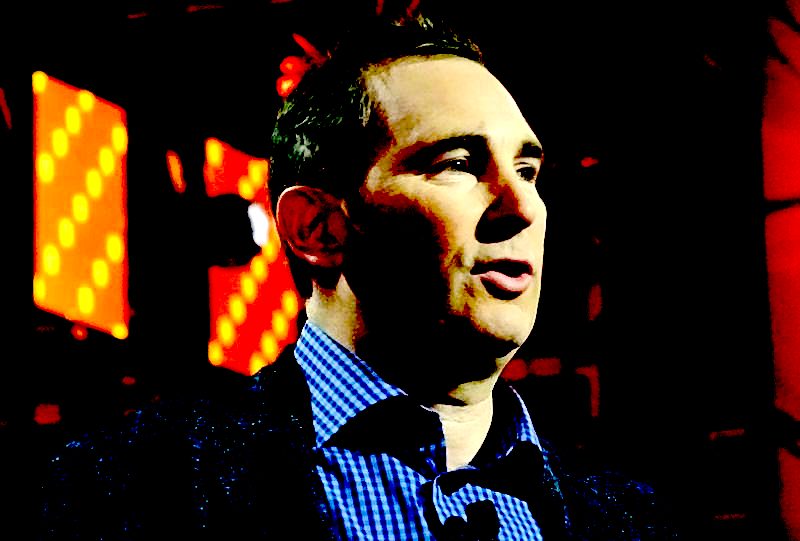 CLOUD
CLOUD
 CLOUD
CLOUD
 CLOUD
CLOUD
Yet another strong showing in cloud computing failed to prevent Amazon.com Inc. from reporting a surprise loss, and a disappointing forecast for the next quarter sent its shares down hard in extended trading today.
The retail and cloud giant reported its first-quarter net loss of $3.8 billion, or $7.56 a share, reversing an $8.1 billion profit in the year-ago quarter — though that loss included a pretax non-operating loss of $7.6 billion from the reduced valuation of its stake in Rivian Automotive Inc. Revenue rose 7%, to $116.4 billion, the slowest growth rate in at least three years, though it would have been 9% if not for unfavorable foreign exchange rates.
Analysts had expected the profit decline and revenue slowdown, forecasting an $8.18-a-share profit on revenue of $116.5 billion, but the overall loss caught many by surprise since they hadn’t figured in the impact of Rivian’s stock decline. And even the $7.38-per-share adjusted profit fell below the $8.36 Wall Street expected.
As usual, Amazon Web Services Inc., the company’s cloud unit, was the tail wagging the dog. It earned an operating profit of $6.5 billion, up from $4.2 billion a year ago, on revenue of $18.4 billion, up 37% from a year ago. That more or less matched analysts’ forecast of $18.5 billion in cloud revenue, though it’s a slowdown from the 39.5% growth in the fourth quarter. Its operating profit more than made up for a $2.8 billion operating loss on the retail side.
In prepared comments, Amazon Chief Executive Andy Jassy (pictured) cited “unusual growth and challenges” from the pandemic and the Ukraine war, calling out AWS’ continued momentum. “With AWS growing 34% annually over the last two years, and 37% year-over-year in the first quarter, AWS has been integral in helping companies weather the pandemic and move more of their workloads into the cloud,” he said.
But Jassy spent more time laying out Amazon’s recent shift from scrambling to meet pandemic-driven demand for e-commerce to now contending with how to become more efficient.
“Today, as we’re no longer chasing physical or staffing capacity, our teams are squarely focused on improving productivity and cost efficiencies throughout our fulfillment network,” he said. “We know how to do this and have done it before. This may take some time, particularly as we work through ongoing inflationary and supply chain pressures, but we see encouraging progress on a number of customer experience dimensions, including delivery speed performance as we’re now approaching levels not seen since the months immediately preceding the pandemic in early 2020.”
Investors weren’t thrilled with the results and, more important, the outlook. Amazon said sales are expected to rise about 3% to 7% from the second quarter of 2021, to a range of $116 billion to $121 billion — way under analysts’ forecast of $125 billion. And it’s forecasting a wide range in operating profit, from a loss of $1 billion to a profit of $3 billion, compared with a profit of $7.7 billion in the pandemic-boosted second quarter of 2021.
Amazon’s shares fell about 10% in after-hours trading. They had risen 4.7%, to $2,891.93 a share, in regular trading on a day on which the Nasdaq rose more than 3%.
Amazon’s main retail business has been buffeted by a series of challenges — ongoing supply chain disruptions from the pandemic and the war in Ukraine, higher wages and higher freight and shipping that collectively resulted in some $4 billion in additional costs in the fourth quarter.
Amazon had raised pay to an average of more than $18 an hour late last year, offering sign-on bonuses of $3,000 to some workers and announcing a plan to pay for worker tuition. It has also spent heavily on fulfillment infrastructure, such as doubling container processing capacity and expanding its fleet of delivery aircraft.
Chief Financial Officer Brian Olsavsky told analysts on a conference call that Amazon saw some $6 billion in extra costs in the past year. About a third of that came from inflationary pressures such as higher fuel, shipping and wage costs, while two-thirds came from internal costs, including more workers than needed, resulting in lower productivity, and excess physical space.
It’s the latter that Amazon hopes to address later in the year, though Olsavsky said this $4 billion in extra costs will persist into the second quarter. He didn’t mention specifics on how those costs would be reduced, though he alluded to reducing contractors during the first quarter and overall employment from a peak of 1.7 million to 1.6 million people.
Meantime, although its cloud business has seen accelerated growth recently, AWS also faces increasing competition from the likes of Microsoft Corp., Google Cloud and Oracle Corp. On Tuesday, Microsoft reported particular strength in cloud, as its cloud revenue tose 32% in its latest quarter. And Alphabet also on Tuesday reported strong growth for Google Cloud as revenue jumped 44%, to $5.8 billion, with a somewhat smaller operating loss than a year ago of $931 million.
Advertising remained a bright spot, with a 23% rise in revenue from a year ago, to $7.9 billion. Subscription services, including the Amazon prime free-shipping and media services, rose 11%, to $8.4 billion
In early March, Amazon announced a 20-for-1 stock split intended to lower the barrier to entry for more investors. The split will be effective June 6.
THANK YOU